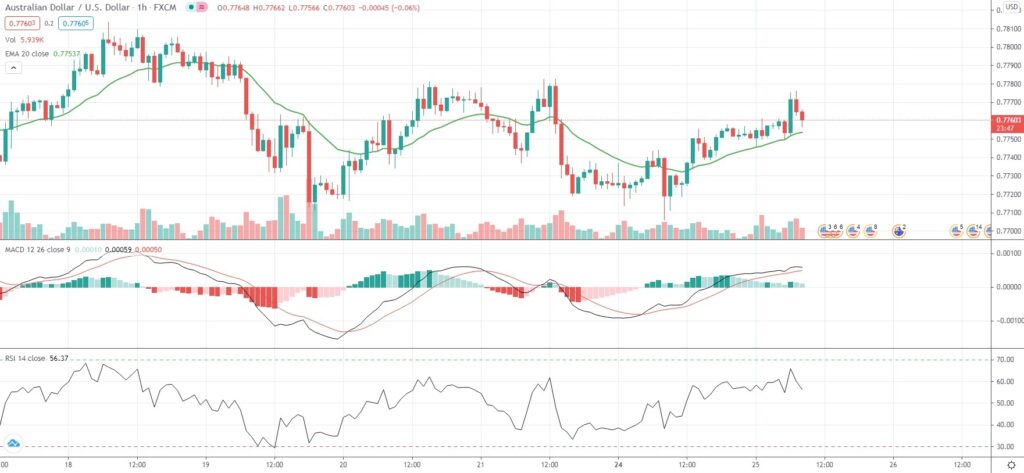AUD/USD edged higher on Tuesday, mostly due to a weaker US Dollar, as Federal Reserve officials allayed concerns that inflationary pressure would force the central bank to tighten policy.
“I think there will come a time when we can talk more about changing the parameters of monetary policy, I don’t think we should do it when we’re still in the pandemic,” Federal Reserve President for St. Louis James Bullard said on Monday.
Market players have remained strictly focused on inflation, the way the central bank might tackle it as well as on any remarks or data that could provide clues on either.
“The whole world is in a wait-and-see mode,” Stuart Oakley, head of cash currency trading at Nomura, was quoted as saying by Reuters.
“The next few months are going to be so pivotal for Forex, purely based on when the Fed starts talking about tapering, and that is 100% down to how the data’s going to pan out this month and next month. The minute we get so much as a suggestion that some of that stimulus (has) moved, then everything’s going to change drastically,” Oakley added.
The yield on 10-year US government bonds hovered just above a two-week trough, at 1.6063%.
Meanwhile, yesterday AUD/USD hit an intraday low of 0.7706, its weakest level since May 13th, after China announced intentions to take measures against excessive speculation in commodity markets, including iron ore.
China’s market regulatory authorities said over the weekend that industrial metal companies should maintain “normal market order.”
Last week Chinese authorities also said that an “unreasonable” surge in prices of commodities such as copper, coal, steel and iron ore would be managed.
Still, according to Commonwealth Bank strategists, the Aussie dollar remains “undervalued relative to the level implied by iron ore prices.”
“In our view, iron ore prices have room to pare back some of this year’s stellar gains without dragging AUD/USD lower,” they wrote in an investor note.
As of 8:30 GMT on Tuesday AUD/USD was edging up 0.14% to trade at 0.7762, while moving within a daily range of 0.7746-0.7776. The major currency pair has gained 0.67% so far in May, following another 1.53% surge in April.
Bond Yield Spread
The spread between 2-year Australian and 2-year US bond yields, which reflects the flow of funds in a short term, equaled -7.84 basis points (-0.0784%) as of 8:15 GMT on Tuesday, down from -7.0 basis points on May 24th.
Daily Pivot Levels (traditional method of calculation)
Central Pivot – 0.7738
R1 – 0.7771
R2 – 0.7790
R3 – 0.7823
R4 – 0.7855
S1 – 0.7719
S2 – 0.7687
S3 – 0.7667
S4 – 0.7648






